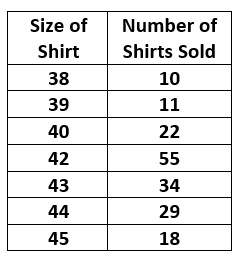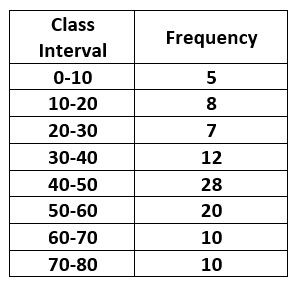Mode for Frequency Distributions
In this class, We discuss Mode for Frequency Distributions.
For Complete YouTube Video: Click Here
The reader should have prior knowledge of the mode. Click Here.
Example 1: Discrete Values
The below table shows the frequency distribution of shirts data.

The table shows the size of the shirts and the number of shirts sold.
Mode = the shirt having the highest frequency = 42 sizes has frequency value 55.
Mode for continuous values:
The below table shows the continuous frequency distribution.

The class with the highest frequency value is considered the mode class.
Fm = mode class
The interval of the model class is 40 – 50.
Giving a mode value of 40 is not good because the left side will have less number of data values.
Giving a mode value of 50 is not good because the right side will have less number of data values.
We discussed a similar logic in the median class. Click Here.
The measure of central tendency should always go with the central value, and we need to find a value between 40 and 50.
F0 = frequency of the class before mode class.
F2 = frequency of the class after mode class.
Mode = L + h((Fm – F0)/((Fm – F0) + (Fm – F2)).
L is the lower limit of the modal class.
‘h’ is the length of interval for modal class.
Based on the frequencies of previous and after classes, the equation will assign a value between the modal class interval.
Substituting the values we get mode = 40 + 10(16/24)
Mode = 46.67
